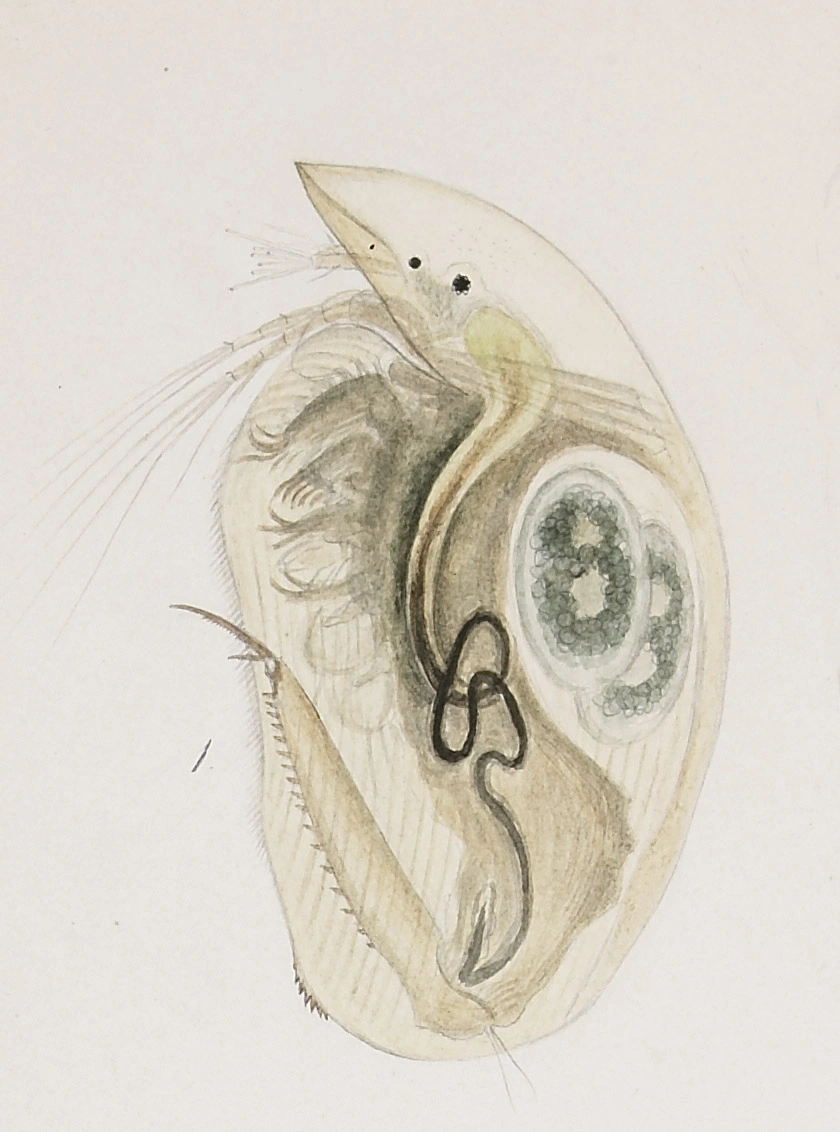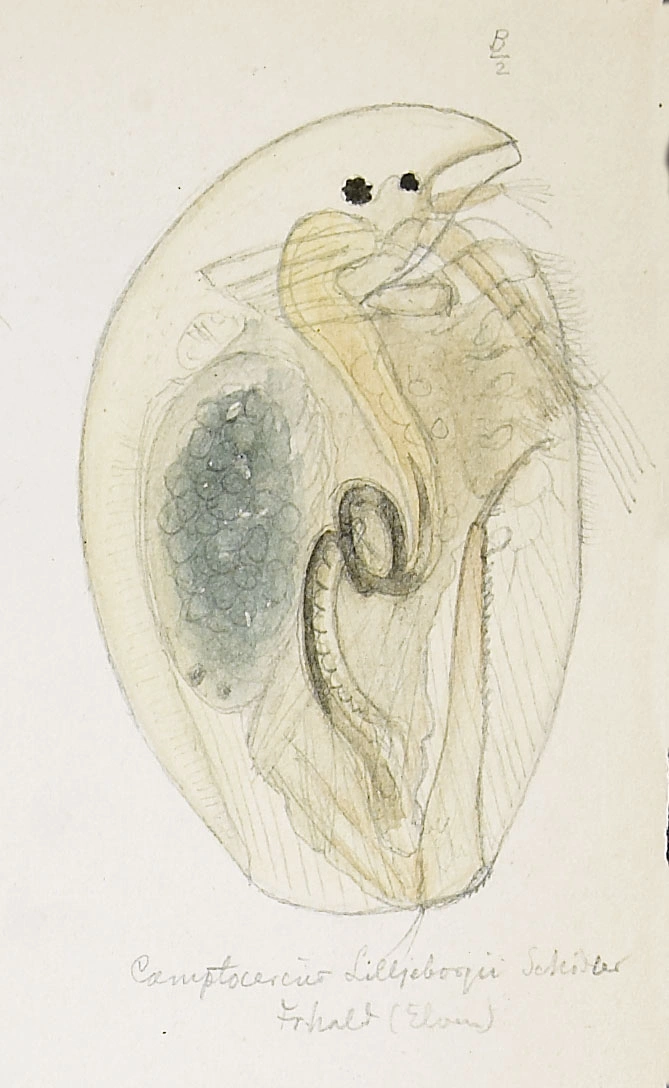Camptocercus rectirostris
Camtocercus rectirostris has an oval look with a postabdomen which is particularly long and slim. Though it seems to be quite tolerant towards pH, it often appears when a lake recovers from acidification.
Key characteristics
Camtocercus rectirostris (female)
Morphologically, Camtocercus spp resembles Acroperus harpae, but the body of these species have a more oval look and they are larger than A. harpae. The two species that belong to this genus have almost the same shape but the rostrum is directed more anteriorly in C. rectirostris compared to C. lilljeborgi. The postabdomen in both species, which is particularly long and slim, is tapering evenly towards the end. The postabdomen of C. rectirostris has <20 denticles while C. lilljeborgi has >20. The carapace is very transparent, giving the animal a light yellow colour.
Female: Length 0.7–1.4 mm
Male: Length 0.9–1.0 mm
Ecology and distribution
C. rectirostris is a littoral species recorded from nearly 5 % of the localities and is distributed in all parts of Norway. It occurs in localities of all sizes between 6 and 962 m a.s.l. It is most common on stony bottom, though it is also found in stands of Carex. Though C. rectirostris seems to be quite tolerant towards pH (4.3–8.1), it often appears when a lake recovers from acidification due to liming. The species is rare in electrolyte poor water (<1.5 mS/m).
| Vitenskapelig navn | < 4,5 | 4,5 - 4,9 | 5,0 - 5,4 | 5,5 - 5,9 | 6,0 - 6,4 | 6,5 - 7,0 | 7,0 - 7,4 | > 7,5 |
|---|---|---|---|---|---|---|---|---|
| 3 | 1,7 | 3,8 | 6 | 8,3 | 5,4 | 5,8 | 6,3 |
| Vitenskapelig navn | < 1,0 | 1,0 - 1,4 | 1,5 - 1,9 | 2,0 - 2,9 | 3,0 - 3,9 | 4,0 - 4,9 | 5,0 - 6,9 | 7,0 - 9,9 | > 10,0 |
|---|---|---|---|---|---|---|---|---|---|
| 0 | 0,8 | 6,8 | 4,3 | 7,7 | 6,2 | 7,6 | 4,6 | 4,8 |
| Vitenskapelig navn | < 0,01 | 0,01 - 0,09 | 0,1 - 0,9 | 1,0 - 9,9 | 10,0 - 99 | 100 - 999 | > 1000 |
|---|---|---|---|---|---|---|---|
| 4,9 | 1 | 1,9 | 4,1 | 4,6 | 8,2 | 15,2 |
| Vitenskapelig navn | < 100 | 100-299 | 300-499 | 500-699 | 700-999 | >1000 |
|---|---|---|---|---|---|---|
| 3,2 | 8,7 | 6,8 | 3,4 | 0,6 | 0 |
Look-alikes
Camptocercus lilljeborgi and Acroperus harpae


